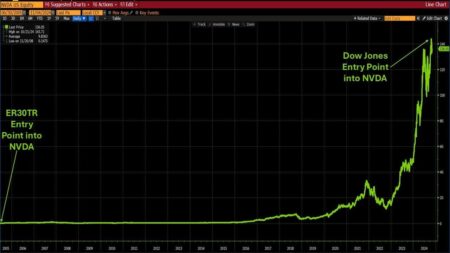In January, after the start of the earnings season, we heard warnings about the weak seasonal outlook for the stock market in February. Some forecasters also had the view that earnings could not possibly live up to expectations.
Before earnings started there were expectations for a 1.2% rise in earnings. Now that the season is drawing to a close 75% of the S&P 500 have beaten their estimates with a growth rate of 8%.
The earnings forecasts were also off for most of 2023 as Morgan Stanley
MS
The weak seasonal track record for February convinced many that stocks could not continue to stay strong in February. I looked at the data in early February and explained why I thought that stocks would stay strong in February.
Now the results are in as the S&P 500 was up 5.2% and the Nasdaq gained 6.1% which was their best February gain since 2015. It is not surprising that many of the year-end S&P 500 targets have already been exceeded. Goldman Sachs recently raised its forecast to 5,200 from 5,100 but it was 4,700 in December. I expect to see other firms adjust their targets higher in the next month or so but that is not necessarily positive.
Last week four of the markets were higher and three were lower. The iShares Russell 2000 was up 3% followed by a 2.3% gain in the SPDR Gold Shares (GLD
GLD
Under pressure was the Dow Jones Utility average as it lost 1.9% and is down 3.42% YTD. The Dow Jones Transportation Average was down 0.6% with the Industrials barely lower.
On the NYSE last week, 1732 issues were advancing, and 1182 declining. On the Nasdaq Composite, the numbers were also strong with 2851 advancing issues and 1795 declining. For both markets, the New Highs led the New Lows by a wide and positive margin.
The weekly chart of the Spyder Tryst (SPY
PY
SPY
From my perspective, the underlying strength of this rally can be traced to the advance/decline data that I have followed since the 1980’s. Each market day most market averages, like the S&P 500, report the number of stocks advancing and declining. This data goes into constructing the advance/decline line which is a cumulative total of the advances minus the declines.
The weekly S&P 500 A/D line is plotted below the SPY chart in red with a 21-period weighted moving average (WMA) in green. In my methodology, I monitor most major A/D lines and watch to see if the A/D lines are leading or lagging the price action. In 2007 the NYSE All A/D line peaked in June 2007 and formed lower highs in October when the major averages made their highs.
Therefore it was important for my analysis when the S&P 500 A/D line made a new high in June as it projected a new high for the S&P 500 and SPY. It was also bullish that Zweig Breath Thrust (ZBT) generated its 2nd buy signal in November 2023. That was the first time since 1962 that there had been two ZBT buy signals in one year. There had also been a ZBT buy in March 2023.
Each of the past 17 times a ZBT signal was generated stocks have been higher for the next six and twelve months. “The average 12-month forward returns? More than 23%.” A week after the ZBT signal the on-balance-volume (OBV) broke its downtrend, line c, and moved above its WMA. This was a sign that volume was supporting the positive price action.
So what is next? Those stocks or ETFs that led the market higher from the October lows are extended and should be hit the hardest on the inevitable correction. The strong close last week has likely caused some to leave the correction camp who were beating the drum at the start of the month. There was some loss of momentum earlier in the month but they did not evolve into sell signals
The Invesco QQQ
QQQ
The Nasdaq 100 A/D line has been in a range for most of the past month and closed back above its WMA. It has not yet made a new high but the expected turn lower in yields should favor QQQ. Warnings for the next correction will come when the A/D line starts to form a downtrend. It would be confirmed by a drop below the A/D line support at line b.
The daily relative performance (RS) did hold the support at line c and has moved above its WMA. This indicates it is again leading the S&P 500 higher. In the past week, the T&J’s multiple time frame analysis has turned positive on the energy ETFs and real estate.
The energy ETFs have been declining since the September highs. The real estate and small-cap ETFs have corrected steadily from the December highs but now look ready to move higher. Many stocks that show up in my scans have continuation formations and look ready to rally again. They provide the best risk/reward opportunities.
Read the full article here
















